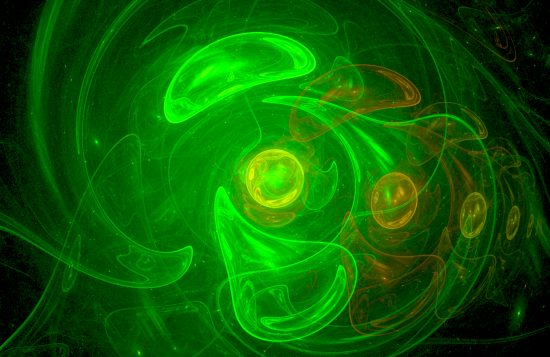
“Space Warp”. Fractal by Stephen Smith.
Oct 2, 2017
Black holes are said to “warp space”.
Consensus theories state that inside of a black hole matter occupies no volume, yet retains its gravitational forces. Those forces are so great that no light can escape, so they are called “black” holes, because they are undetectable with optical telescopes. The fact that they are impossible to observe, directly, is a problem, since nearly all galaxy cores are said to harbor so-called “supermassive black holes” (SMBH).
From an Electric Universe perspective, the black hole terminology used by astronomers is problematic. Ambiguous ideas such as “the fabric” of space/time, multiple universes, infinite density and other unquantifiable ideas introduce irony into their investigations. Ironic ideas notwithstanding, in spite of conventional theories, the formation and evolution of an SMBH remains mysterious.
According to a recent press release, those gravitational monsters “…pose a serious challenge to the theory of black hole formation and evolution. The physical mechanisms that form black holes and drive their growth are poorly understood.” The difficulty that astronomers have is that no SMBH should exist at 13 billion light-year distances, because the Universe was not old enough for the remains of the first stars to evolve into supernovae explosions, thought to be the mechanism behind most SMBH formation.
Using super-computer simulations, researchers concluded that, “supersonic gas streams left over from the Big Bang” instigated a rapid development of giant stars, with 34,000 times the mass of the Sun. However, more irony is present in their studies, since those supersonic gas streams require a “massive clump of dark matter” to exist in the early Universe. They refer to this simulation as “significant progress” in understanding the putative SMBH phenomenon.
There were already a number of inexplicable building blocks in the black hole edifice before adding supersonic gas flow and dark matter: there is no evidence that matter can be compressed to nearly infinite density in virtually no volume; supernovae formation phenomena are not clear, since stars do not form spherical shells when they explode, they form glowing bipolar formations shaped like hourglasses, therefore, a spherical “event horizon” should not exist. No one knows why black holes absorb all the matter in their “accretion disks” within a few months of formation.
It is often noted in these pages that theories should not be built upon the questionable assumptions of other theories. The list of events derived from computer simulations that are based on foregone conclusions continues to grow, however.
Plasma physicist and Electric Universe pioneer, Hannes Alfvén, thought that the “exploding double layer” should be considered as a new class of celestial object. Double layers in space plasmas form most of the unusual structures that give conventional astronomers headaches. Supernova explosions, galactic jets, glowing rings, and energetic clouds in space are examples of how electricity behaves when it moves through dusty plasma.
Birkeland currents in plasma filaments form plasmoids, the more logical system for the birth of stars and galaxies. Electricity is responsible for stars, and when stellar current density gets too high, double layers in the circuit explode, appearing as gamma ray bursts, or X-rays, or flares of ultraviolet light—supernovae, in other words. Although, astronomers believe that those observations are due to gravity’s influence, with no mention of electric charge.
Gigantic masses compressed into tiny volumes are unnecessary: laboratory experiments create flares, jets, and other celestial events using mundane electrical equipment. No supercomputer simulations are necessary, since the experiments can be conducted in real time.
Stephen Smith












